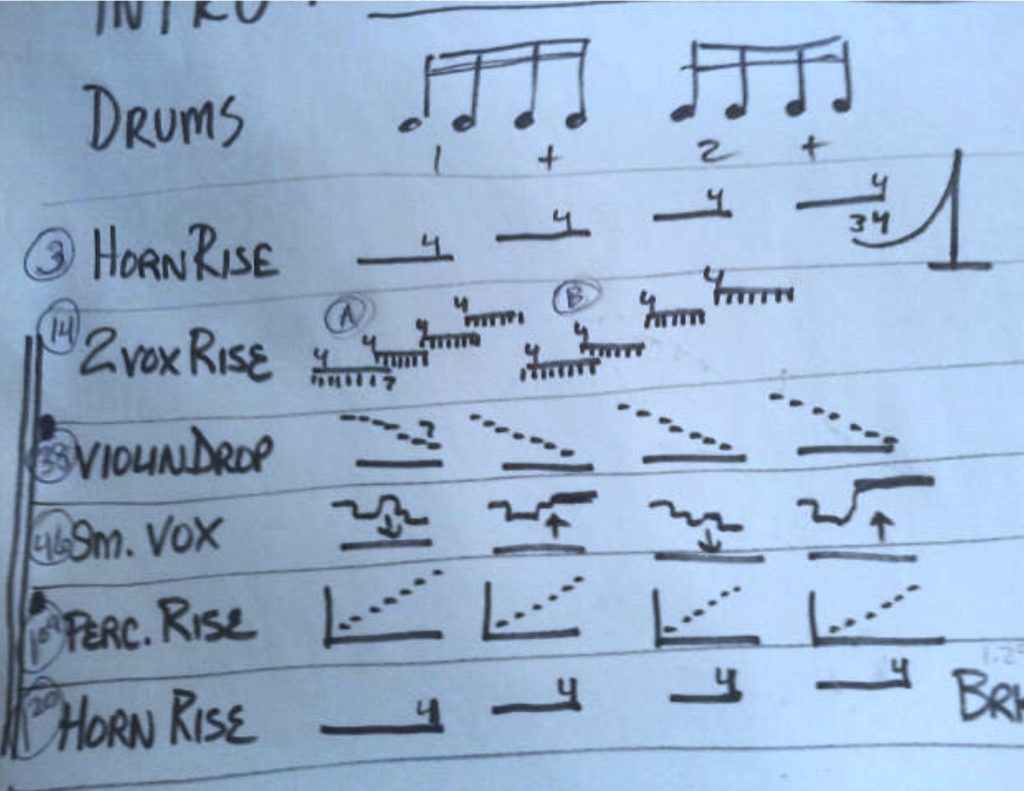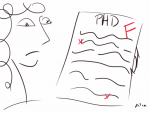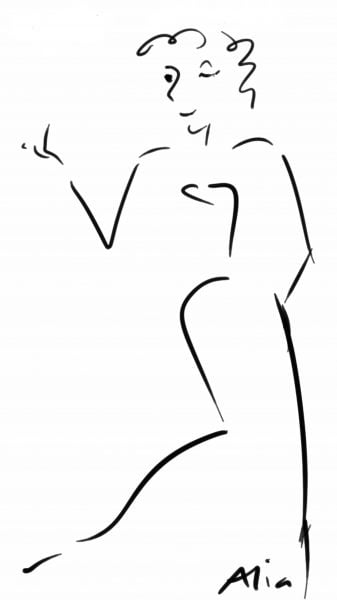There are a lot of ways to chart music. The most standard is proper written music with staff lines and notes. But most of us can’t sight-read music, and besides, as dancers, we don’t need to see the notes–we need the space to write what we’re going to do.
There are many methods of doing this, and like formal outlines, they don’t all appeal to everyone. So most folks make up their own methods. This is perfectly fine. Some people count, some draw diagrams of the music, some write descriptions. All are valid methods. What’s important is that it makes sense–to you. You can totally invent a method, as long as you know what it means. Once you start including others in your pieces, it also has to make sense to them.
Here’s a sample from Dawn Ventimiglia. The picture below is Dawn’s map to the first part of the ES Posthumus song, “Pompeii”: http://youtu.be/ GusLypfx7OQ Dawn said, “The double lines on the left are the section that repeats (though this shot is missing the extra tidbits later in the song). Also, off to the right (out of the shot), those horizontal lines continue, and I jot choreo notes next to each section.
“This is a HUGE newsprint pad – super cheap, and great for doing this stuff. I hate working small on this kind of thing – sort of inhibits my thinking, AND, this way, I can view it while working on the choreo.” Listen to the song and see if you can follow Dawn’s notation.

We do what works for us. I use a spreadsheet. I put columns for the time, the measures, the mood, instrumentation, and then a big long one for what I’m going to do. It keeps everything organized, and I can print it out and write on it by hand, then transcribe it later.
We are not the only people who write out music to suit ourselves. Here’s a lovely article about Caroline Shaw, 2013’s years Pulitzer Prizewinner for music. Though she wrote the musical score itself in standard form, she wrote all kinds of whimsical sound directions instead of the Italian classics–such as “mixy,” “floaty head voices,” and “plainchantish improv on these two pitches.”
And here’s Big Maybelle, just for fun.
Love,
Alia
PS Upcoming stuff!
- I haven’t forgotten that we have a class coming up on Mapping Music. I’ll have more info for you next week.
- Visionary Veil–Beyond Tricks starts Tuesday, Sept 14. Learn to improvise with the veil and enjoy it magical properties!
- How to Write a Blog Post is coming October 16. Writing icky? This is for you!






No comment yet, add your voice below!